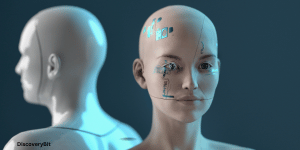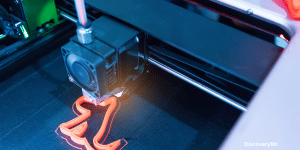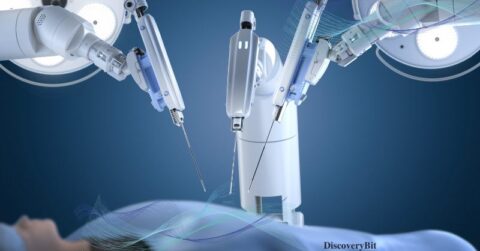51) Personalized Medicine

Personalized medicine is a field of medicine that tailors treatment to an individual’s unique genetic makeup, environment, and lifestyle. It relies on technologies such as genomics, proteomics, and metabolomics to identify an individual’s unique characteristics and develop treatments specific to those characteristics. The concept of personalized medicine has been around since the early 2000s but has gained traction in recent years with advancements in technology and the availability of big data.
52) Self-Healing Concrete

Self-healing concrete is an innovative material that has the ability to repair its own cracks and damages. It was first developed in the 1990s by microbiologist Hendrik Jonkers at the Delft University of Technology in the Netherlands. The self-healing process is achieved by embedding bacteria or microcapsules containing healing agents such as calcium carbonate in the concrete mix. When the concrete cracks, the bacteria become activated and produce calcium carbonate that fills the cracks and restores the material’s structural integrity. This technology has the potential to significantly extend the lifespan of concrete structures, reduce maintenance costs, and improve sustainability in the construction industry.
53) Space Elevators

Space Elevators are a hypothetical form of transportation that would allow people and payloads to travel from the Earth’s surface to space without using rockets. The idea was first proposed by Russian scientist Konstantin Tsiolkovsky in 1895 and later popularized by Arthur C. Clarke in his novel “The Fountains of Paradise”. The concept involves a cable or ribbon extending from the surface of the Earth to a stationary orbit around the planet, with a counterweight at the far end of the cable to maintain tension. Climbers or elevators would travel up and down the cable, powered by electricity or other means. While the concept remains in the realm of science fiction, research continues on the feasibility and potential applications of space elevators. Space elevators could provide a cost-effective way to transport goods and people into space.
54) Human Augmentation

Human augmentation refers to the use of technology to enhance or augment human capabilities, including physical, cognitive, and sensory abilities. This can include implantable devices, wearable technology, and other forms of assistive technology. The goal of human augmentation is to improve quality of life, increase productivity, and provide solutions to individuals with disabilities. Human Augmentation can be traced back to the 1960s, with the development of prosthetic limbs and hearing aids. However, recent advancements in technology have led to the development of more advanced forms of human augmentation, such as brain-computer interfaces, exoskeletons, neural implants, and prosthetics that can sense and respond to human movement. While these technologies have the potential to revolutionize healthcare and disability services, there are also ethical and social considerations that must be addressed.
55) Li-Fi

Li-Fi, or light fidelity, is a wireless communication technology that uses light to transmit data instead of radio waves used in Wi-Fi. The technology was first demonstrated in 2011 by Harald Haas at a TED Talk and has the potential to revolutionize the way we access the internet. Li-Fi is faster and more secure than Wi-Fi and could be used in areas where radio waves are not permitted, such as hospitals and aircraft cabins.
56) Electric Airplanes

Electric airplanes are aircraft that rely on electric motors powered by batteries instead of traditional combustion engines. They have the potential to significantly reduce carbon emissions and noise pollution in the aviation industry. The first all-electric flight took place in 2010 with the flight of the Elektra One prototype airplane. Since then, electric airplane technology has advanced rapidly, and several companies are working on developing commercial electric planes. For example, in 2019, the startup company Eviation unveiled the Alice, a fully electric plane with a range of up to 650 miles and a capacity of up to nine passengers. While electric airplanes still face technical and regulatory challenges, they have the potential to transform the aviation industry in the coming years.
57) Nanobots

Nanobots, also known as nanorobots, are tiny machines that operate at the nanoscale level. They are capable of performing specific tasks, such as delivering drugs to targeted cells or cleaning up environmental pollutants. Nanobots are typically made up of nanoscale components, such as nanosensors, nanomotors, and nanomanipulators. The first nanobot was developed in the 1980s, and since then, research has continued to explore their potential applications in fields such as medicine, energy, and environmental remediation.
58) Artificial Photosynthesis

Artificial photosynthesis is a process that mimics the natural process of photosynthesis, converting sunlight into usable energy by splitting water molecules into hydrogen and oxygen. This technology has the potential to provide a renewable source of energy that is environmentally friendly and sustainable. The first successful demonstration of artificial photosynthesis was achieved in 1998, but the technology is still in the research and development stage. Researchers are working to improve the efficiency of the process and to develop cost-effective methods for large-scale implementation. Artificial photosynthesis can convert sunlight into energy, which could have applications in renewable energy.
59) Smart Grids

Smart grids refer to an advanced electricity network that uses digital communication and control technology to improve the efficiency, reliability, and sustainability of power generation, transmission, and consumption. It enables two-way communication between utilities and consumers to better manage energy supply and demand, integrate renewable energy sources, and reduce carbon emissions. The concept of smart grids emerged in the early 2000s, and since then, many countries around the world have invested in developing and deploying smart grid systems. Smart grids have the potential to transform the energy sector by facilitating the integration of renewable energy sources, reducing energy waste, and improving the resilience of the grid.
60) Nanoscale 3D Printing

Nanoscale 3D printing, also known as two-photon lithography, is a type of additive manufacturing that uses laser light to create intricate structures at the nanoscale level. It was first developed in the early 2000s and has since been used in a variety of fields, including medicine, electronics, and materials science. By using a laser to selectively solidify a liquid photopolymer, it is possible to create complex 3D structures with sub-micrometer precision. This technology has the potential to revolutionize industries such as biomedicine by enabling the creation of intricate tissue scaffolds for regenerative medicine or the development of microelectromechanical systems for use in nanoelectronics.
Tags: Best innovations Best inventions of the 21st century Disruptive innovations Emerging innovations Future innovations Futuristic technology inventions of the 21st century Greatest inventions of the 21st century Innovative products Latest innovations Most innovative technologies of the 21st century new innovations New innovations in technology new innovations of the 21st century









